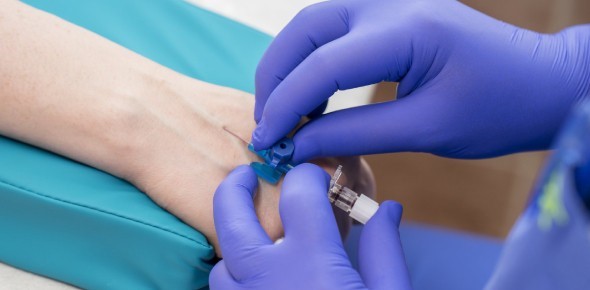A nurse is teaching an older adult client about fall prevention strategies at home. Which of the following client statements indicates an understanding of the teaching?
"I will secure electric cords under the carpeting.".
"I should purchase a skid-proof bathtub mat.".
"I will wear shoes with leather soles in my house.".
"I will get some rubber-backed throw rugs for my vinyl floors.".
The Correct Answer is B
Choice A rationale:
Is not a safe fall prevention strategy. Securing cords under carpeting can create tripping hazards. It is better to keep cords away from commonly used walking paths or use cord covers to prevent falls.
Choice B rationale:
Purchasing a skid-proof bathtub mat is a good fall-prevention strategy for an older adult client. It helps prevent slipping and falling in the bathroom, which is a common area for accidents in older adults.
Choice C rationale:
Is not a recommended fall prevention strategy. Leather soles can be slippery on smooth surfaces, increasing the risk of falls. Instead, the client should wear shoes with rubber soles that provide better traction.
Choice D rationale:
Is not the best option. Throw rugs, even with rubber backing, can still shift or bunch up, posing a tripping hazard. It's safer to avoid using throw rugs altogether or ensure they are firmly secured to the floor.
Nursing Test Bank
Naxlex Comprehensive Predictor Exams
Related Questions
Correct Answer is C
Explanation
Verify that the client has adequate IV access.

Choice A rationale:
Administering vasopressin to the client might be necessary to manage the hemorrhage, but before any medication administration, it is crucial to ensure the client has adequate IV access. Vasopressin is a vasoconstrictor and can help control bleeding from esophageal varices, but its effectiveness relies on IV access to deliver the medication promptly.
Choice B rationale:
Requesting blood from the blood bank is essential for a client experiencing significant bleeding. However, the priority action is to verify IV access to administer any necessary blood products.
Choice C rationale:
This is the correct choice. Before initiating any interventions, ensuring the client has appropriate IV access is a priority. Adequate IV access is necessary to administer fluids, medications, or blood products promptly and effectively stabilize the client's blood pressure.
Choice D rationale:
Inserting an indwelling urinary catheter is not the priority action in this situation. While monitoring urine output is important, it should be secondary to addressing the client's hypotension and hemorrhage.
Correct Answer is C
Explanation
Choice A rationale:
Notifying the surgeon of the temperature elevation is important, but it is not the nurse's priority. A temperature elevation after abdominal surgery could be a sign of infection, but the immediate action should be to assess the surgical incision for any signs of infection.
Choice B rationale:
Encouraging the client to drink more fluids is a good practice to maintain hydration and promote recovery after surgery. However, it is not the nurse's priority in this situation. The elevated temperature and potential infection take precedence over increasing fluid intake.
Choice C rationale:
This is the correct answer because the nurse's priority is to assess the surgical incision for signs of infection. An elevated temperature is a significant finding after surgery, and it may indicate a surgical site infection, which requires prompt assessment and intervention.
Choice D rationale:
Monitoring vital signs every 4 hours is an essential nursing intervention after surgery, but it is not the priority when the client has an elevated temperature and a recent surgical incision.
The nurse must first assess for signs of infection before proceeding with routine vital sign monitoring.
Whether you are a student looking to ace your exams or a practicing nurse seeking to enhance your expertise , our nursing education contents will empower you with the confidence and competence to make a difference in the lives of patients and become a respected leader in the healthcare field.
Visit Naxlex, invest in your future and unlock endless possibilities with our unparalleled nursing education contents today
Report Wrong Answer on the Current Question
Do you disagree with the answer? If yes, what is your expected answer? Explain.
Kindly be descriptive with the issue you are facing.
